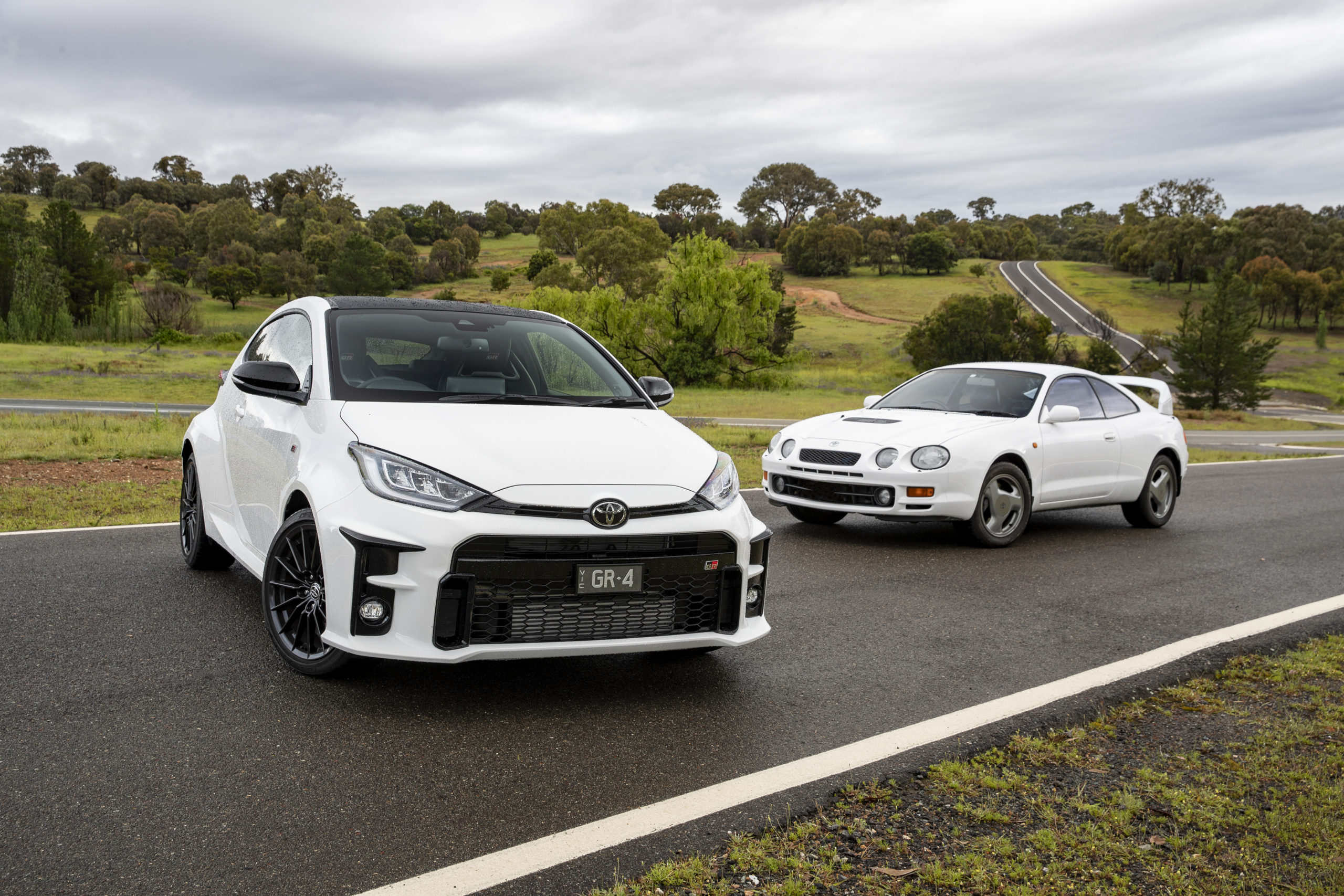
What is it?
Officially it’s called the GR Yaris, but it could easily have been dubbed the Toyota Hot Hatch Hype Machine. The Japanese giant has waited a long, long time to enter the hot hatch game and has arrived with a car that means business.
From the earliest rumours there was a huge amount of anticipation about what Toyota would produce which quickly turned to hype as more concrete details emerged. But it’s not misplaced hype by any stretch of the imagination. This is the latest product of Toyota’s significant investment in its Gazoo Racing performance sub-brand, but also a direct tie-in with the company’s championship-winning World Rally team.
So, the question is – can it live up to the hype?
Does it have any racing pedigree?
It’s all about racing. The GR Yaris is a homologation special for the Japanese giant’s 2022 World Rally Championship entry (it’s first from the company since the Celica GT-Four of the late 1990s). To that end it has a unique platform and unique body to help allow Toyota to build a more competitive WRC machine for next season and beyond.
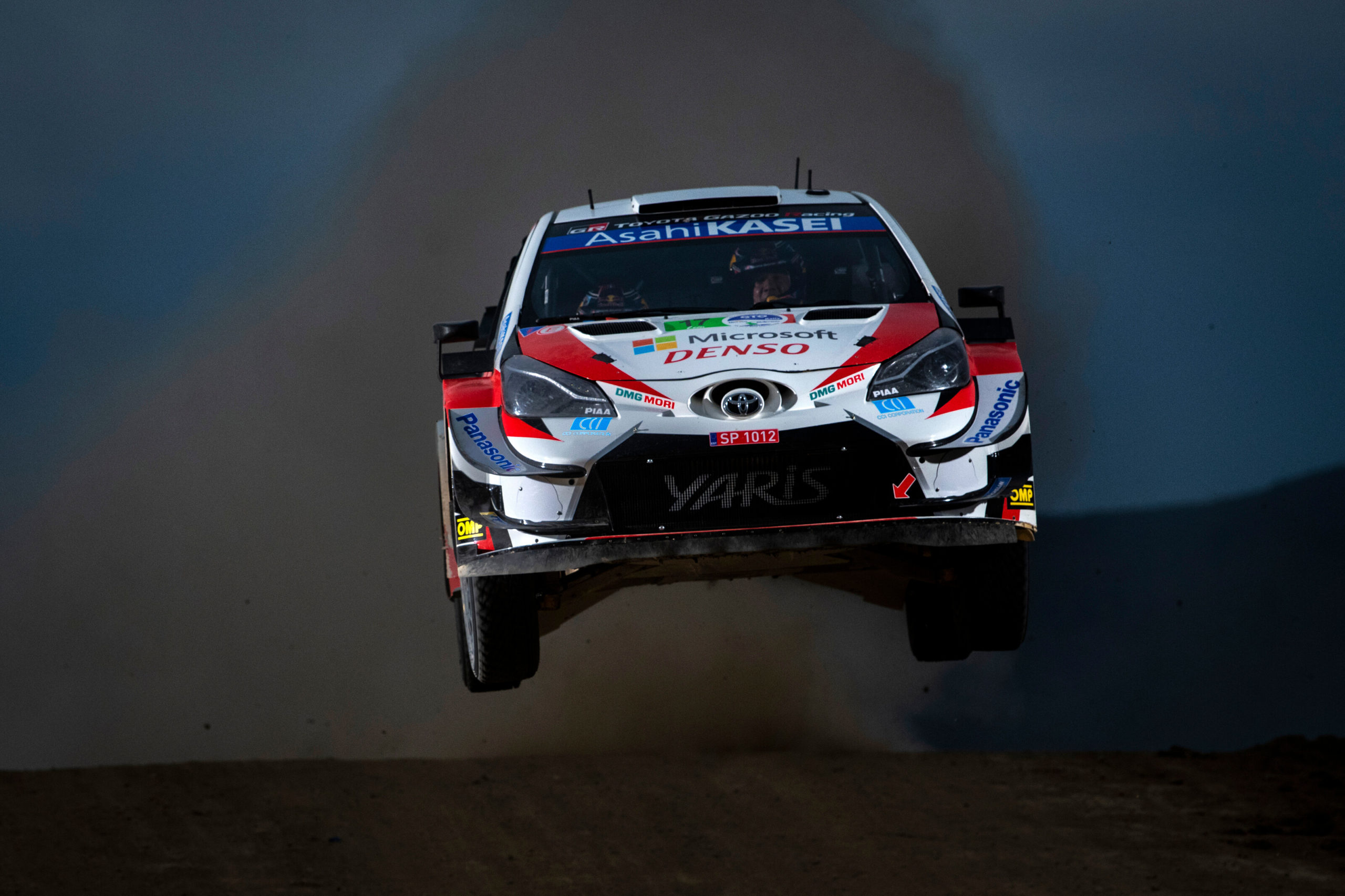
While it may carry the Yaris nameplate, it shares little in common with the compact city runabout. The front half of the car uses the same underpinnings as the Yaris, but the rear-end has more in common with the Corolla. The all-wheel drive system comes from the RAV4, further complicating the GR Yaris’ DNA.
READ MORE: Bates unveils new GR Yaris ARC entry
But, by far, the most obvious difference between the standard Yaris and the GR is the body. Whereas the ‘normal’ model is a five-door, the GR Yaris has a unique three-door body, to accommodate its wide track, all-wheel drive system and give the WRC a better shape to work with. The bonnet, doors and tailgate are all made from aluminium, while the roof is carbon fibre, all to save valuable weight.
And while all that should help whoever replaces Sebastian Ogier next season (assuming the French champ retires as planned), it also makes for an impressive road-going hot hatch.
What’s under the bonnet?
Another unique element of the GR Yaris is the engine; at least for now, as there’s speculation another GR model will use the same motor in the near future. On paper it sounds pretty modest, a 1.6-litre three-cylinder turbocharged petrol engine. Even similar-sized four-cylinder units have struggled to compete with 2.0-litre hot hatch motors in the past, but the Toyota engineers have unlocked something special with this little firecracker.
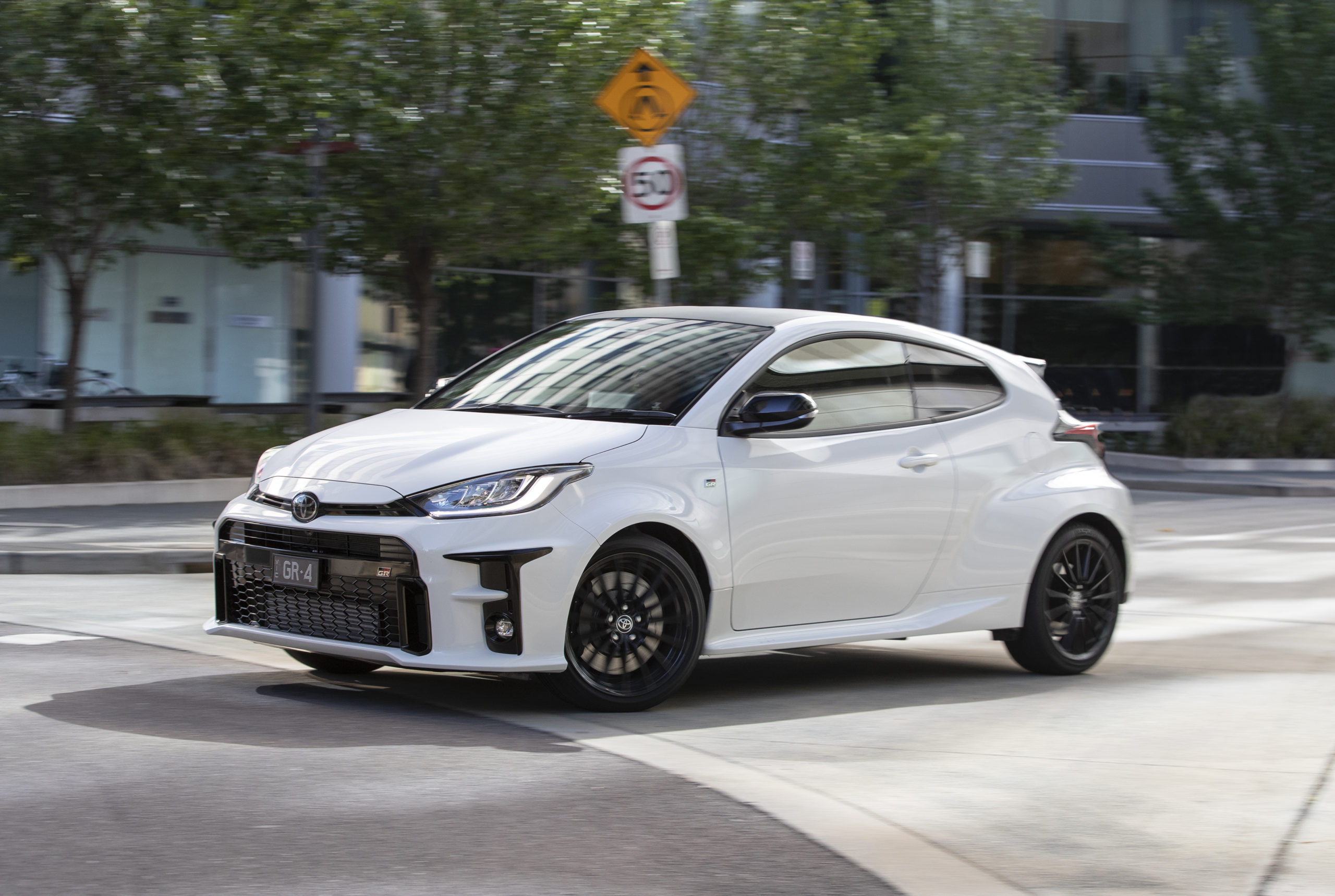
Despite its diminutive size the little engine makes 200kW of power and 370Nm of torque, which is enough to make it competitive against the likes of the 206kW Hyundai i30 N, 213kW Volkswagen Golf R and 228kW Honda Civic Type R.
Forget what you read, based purely on how hard it pulls you wouldn’t know it only had three-cylinders, because it has the ability to shove you back in your seat. Not only does it launch hard, but it stays strong right across the rev range, which makes it feel both potent and flexible.
It makes a three-cylinder sound though, that’s the giveaway. But it’s a deeper, more menacing thrum than what you typically hear from a three-pot city car.
The engine is mated to a six-speed manual transmission, Toyota didn’t even bother with developing an automatic – this is a car for hot hatch purists. It’s a good ‘box too, not just a parts bin grab, the ratios are well matched to the engine and the lever has a nice short throw.
How does it handle?
The spliced Yaris/Corolla underpinnings was largely driven by the end to accommodate the all-wheel drive system (reportedly largely based on the same system found in the RAV4 SUV), but it also allows for a new suspension set-up to improve handling.
The front is the same McPherson strut from the Yaris, but the rear is a more complicated multilink set-up than the standard Yaris which allows for more dynamic tuning. It’s allowed Toyota’s Gazoo engineers to tune the car to drive very differently than a city runabout. There’s a directness and responsiveness to the GR Yaris that sets it amongst the very best hot hatches. It’s helped by steering that is nicely sorted too, offering good response and feedback to the drive.
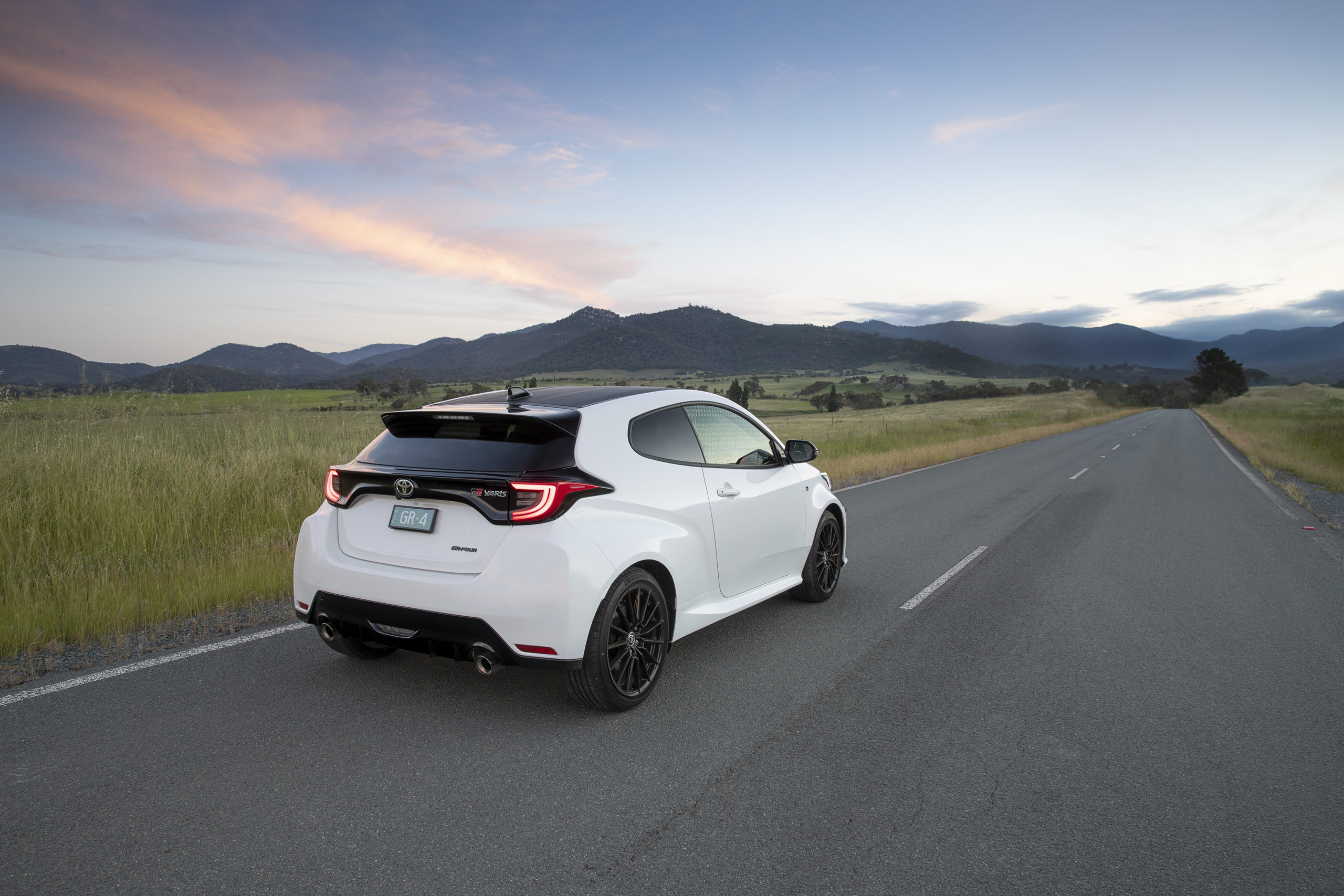
The suspension is also well-tuned in terms of finding a good compromise between handling and ride comfort. While obviously firm the ride never feels uncomfortable, unless you find yourself on very choppy roads, at which point it can get busy.
Braking is handled by 356mm ventilated front discs, clamped by four-piston calipers, with 297mm ventilated rotors with two-piston calipers at the rear. They do their job well, offer solid retardation and a strong, steady pedal feel. I also appreciate Toyota has stuck with an old-school handbrake (rather than a modern electric button), which means there’s potential for some fun doing skids.
However, the GR Yaris isn’t perfect, and one problem dulls its handling in a significant way – the tyres. Toyota has fitted the regular GR Yaris with Dunlop Sports Maxx rubber which simply isn’t a match for the Michelin Pilot Sport and Pirelli P Zero (and even Continental) tyres we’ve experienced on other hot hatches.
Unfortunately most of our test driving was done in the wet, but even so the lack of grip from the tyres was alarming at times. There were moments when the car felt like it was going to understeer right off the road, particularly on coarse chip bitumen. At times it would also slip and slide at the rear when exiting a corner in the Sport setting. While we can’t definitely say how they perform in the dry, speaking with a number of colleagues who have driven the GR Yaris on dry roads they have expressed similar disappointment in the Dunlops.
Whether the Dunlop is a corporate decision or not, unfortunately the tyres are simply not as good as the chassis, which is a shame after all the excellent work the Gazoo team did to make it such a pocket rocket. It’s telling that the upcoming, limited edition, GR Yaris Rallye will include a number of technical upgrades including Michelin Pilot Sport 4S tyres…
Where would you most like to drive it?
A rally stage would be too obvious. Besides, this is a hot hatch that has been tuned for tarmac roads, not gravel or snow. The ideal place would be a tight and technical track that would allow you to explore the limits of the chassis, somewhere like Winton. That would allow you to really play with the GR Yaris and see just what it’s capable of and really see how well the Dunlops stand up.
What’s the interior like?
Toyota has been making steady progress in the past decade or so in regards to cabin presentation and the GR Yaris is an excellent demonstration of that. The brand (quite rightly) copped flak for the plain and cheap interior of the 86 sports car, but clearly it learnt its lesson and ensured that the GR Yaris not only drove well but was a nice car to be inside.
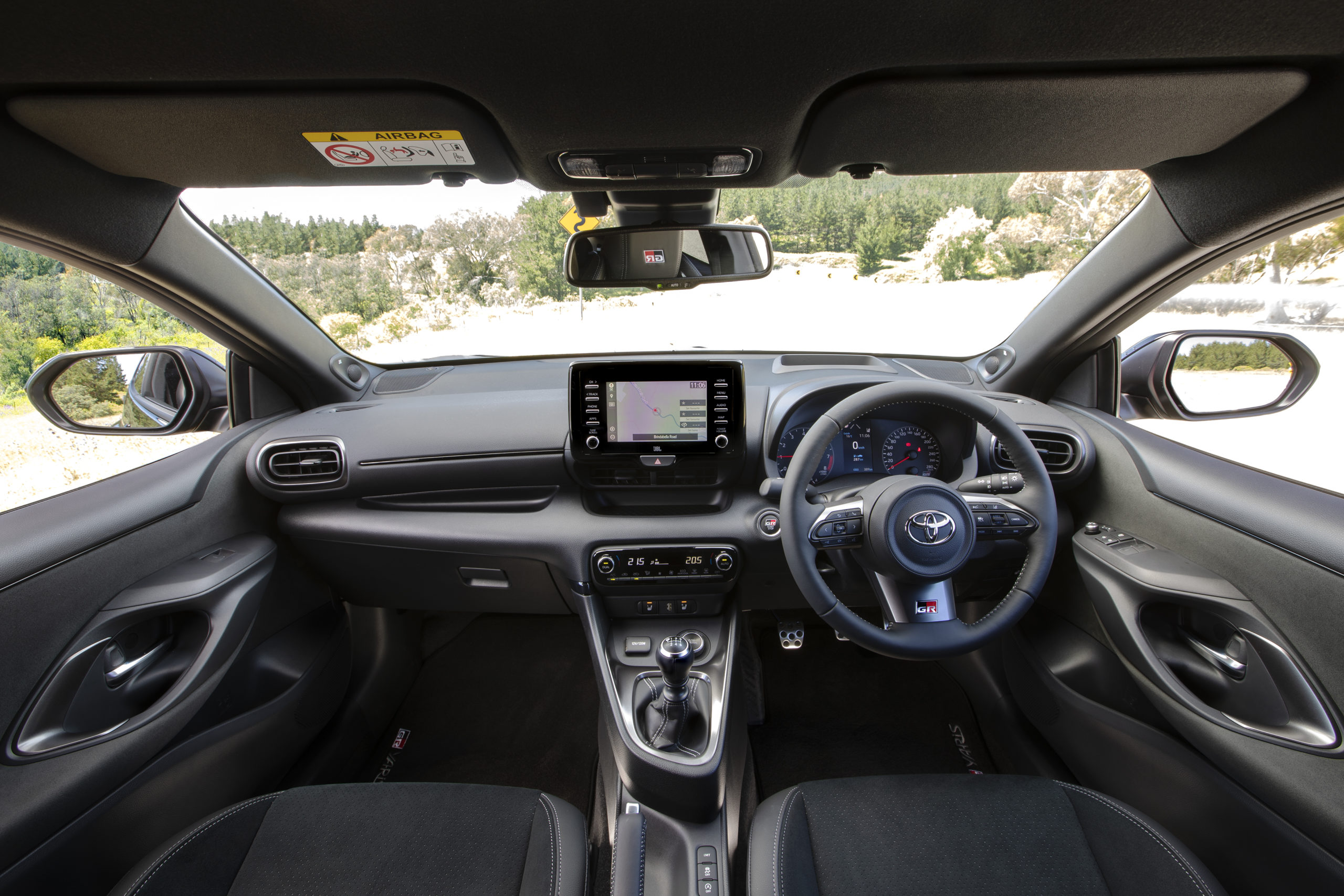
No, it’s not a luxury car, but the layout is focused towards the driver, the materials look and feel good and there’s plenty of handy storage areas. The seats are praise-worthy, offering the kind of support you need in such a dynamic car, without feeling hard or thin.
The obvious catch of the GR Yaris and its unique three-door layout is the compromised rear space, which is really very small and makes this a two-seat hot hatch – which is a rare thing these days.
Is it good value for money?
In the words of Obi-Wan Kenobi, that depends greatly on your point-of-view. The GR Yaris is roughly the same size as a Ford Fiesta ST (from $32,290) and Volkswagen Polo GTI (from $32,890) but costs more than bigger, five-door hot hatches including the Hyundai i30 N (from $41,400) and Ford Focus ST (from $44,890).
Despite its diminutive size the GR Yaris has a big price tag of $49,500 plus on-road costs, which means you’re spending more than $50k for a compact performance hatchback. That puts it up against the likes of the Honda Civic Type R (from $54,990) and Volkswagen Golf R (from $55,990) which offer both impressive performance and more space – which is a major purchasing factor for a lot of hot hatch owners.
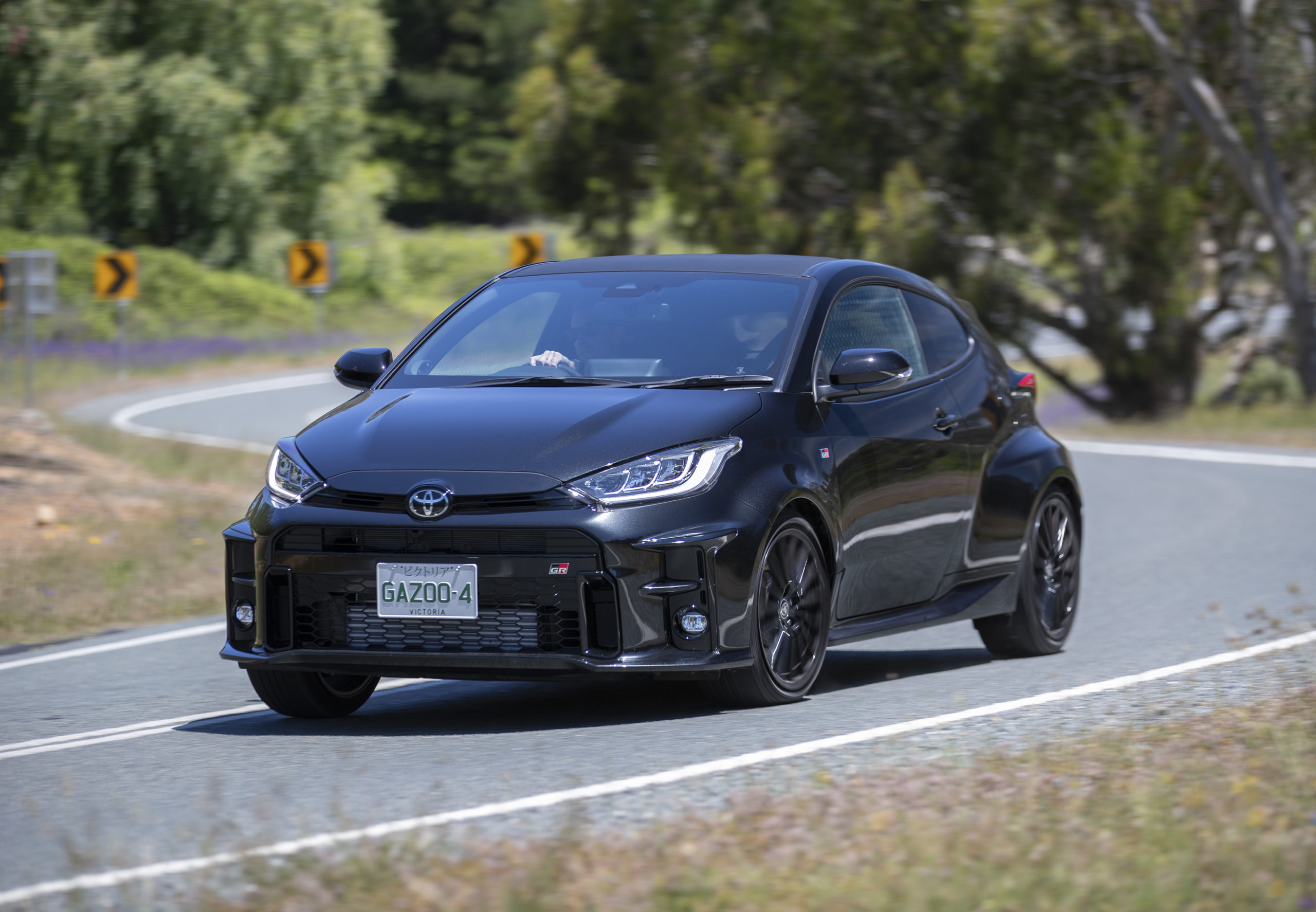
Would I buy one?
Does it live up to the hype – yes. Does that mean I would buy one? As much as I’d love to say ‘yes’ because I like so much of the GR Yaris, but I’m honestly not sure I would buy one myself.
Not to be controversial about one of the most hotly-anticipated and praised performance cars of the last few years, but the bang-for-your-buck equation just doesn’t make sense to me.
Without question the GR Yaris is an excellent hot hatch, and a super-enjoyable one to drive (if a little hairy at times) thanks to its punchy engine and rally-bred handling. But the compromises in terms of both space and on-the-limit handling dent its appeal somewhat.
Put simply, if I was spending $50k on a hot hatch I should feel like the first thing I’d do is head to my local tyre shop for a set of Michelins or Pirellis. Plus even at this price, there’s more to come, with the Rally version offering (on paper, at least) a better package – with front and rear limited-slip diffs, Michelin tyres and a unique suspension tune.
So even though you’re spending so much, you’re ultimately ending up with a GR Yaris that could be better. And that’s not something you can say about the similarly priced but bigger Civic Type R and Golf R.
Even so, there’s no doubt the GR Yaris was worth the wait and does deserve so much of the hype it has received. Welcome to the Hot Hatch Club, Toyota.
2021 Toyota GR Yaris price and specifications
| Price: | From $49,500 plus on-road costs |
| Engine: | 1.6-litre three-cylinder turbo petrol |
| Power: | 200kW at 6500rpm |
| Torque: | 370Nm at 3000-4600rpm |
| Transmission: | Six-speed manual, all-wheel drive |
| Fuel use: | 7.6L/100km |
| Wheels: | 18-inch alloys |
| Tyres: | 225/40 R18 |
| Length: | 3995mm |
| Width: | 1805mm |
| Height: | 1455mm |
| Weight: | 1280kg |
| 0-100km/h: | 5.2 seconds |













Discussion about this post